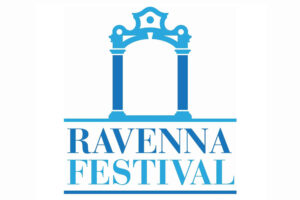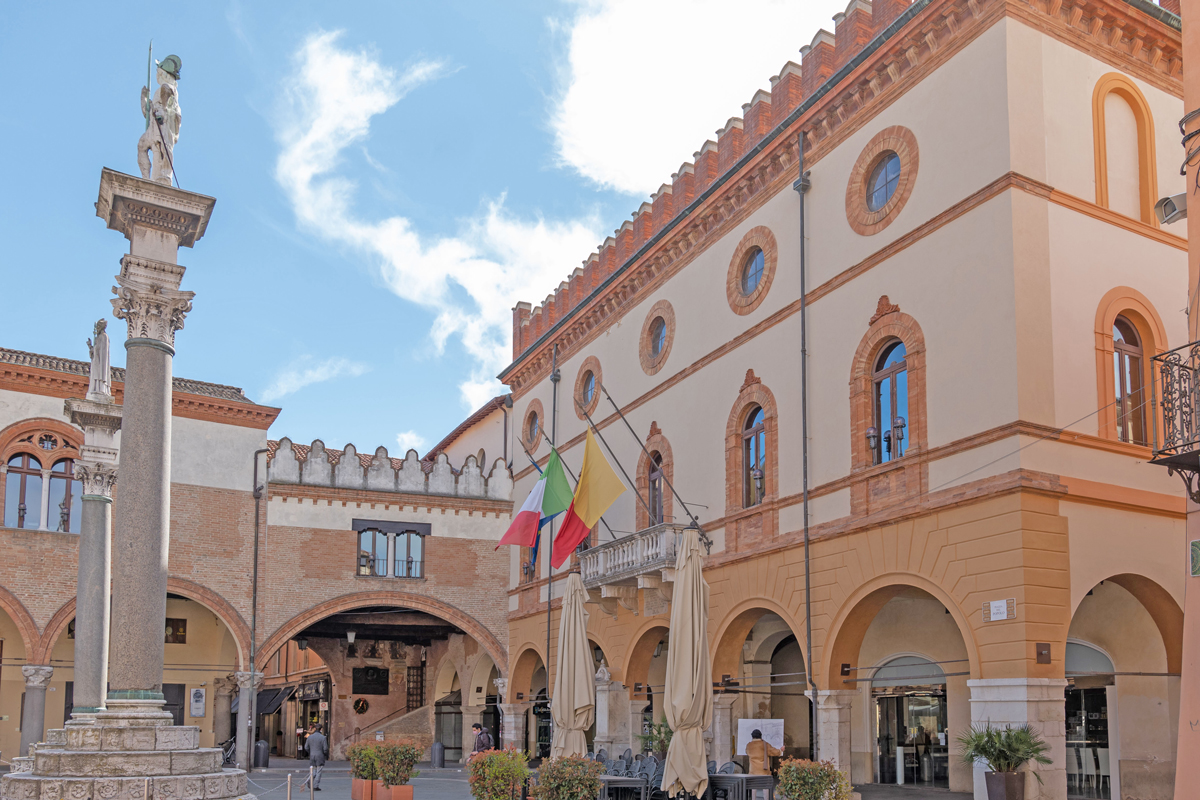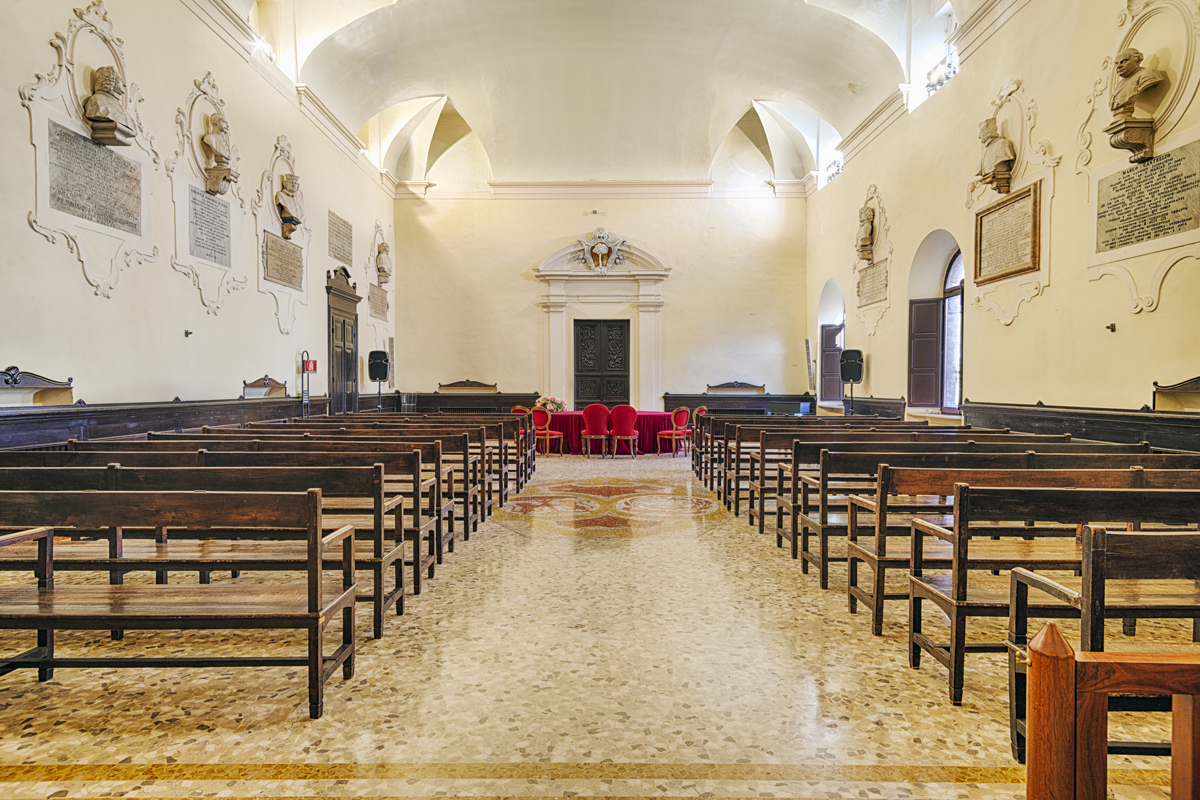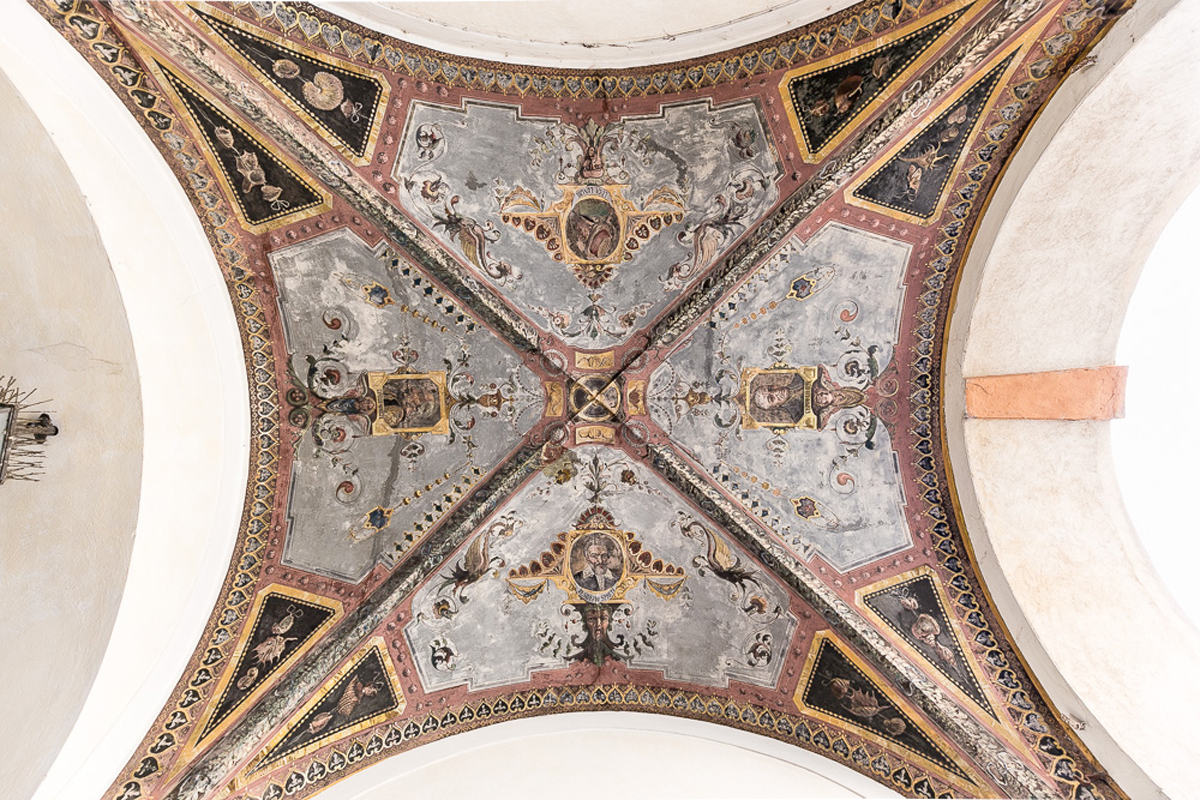In the heart of Ravenna, overlooking the charming Piazza del Popolo, stands the imposing PALAZZO MERLATO, centre of the civil society of the city.
This building is also known as Palazzo Comunale (Town hall), hosting public offices, the City Council and some of the most important public ceremonies and civil marriages.
The current structure features two contiguous corner buildings connected with each other thanks to the vault opening onto Via Cairoli.
The first one, on the north side of the square, is the so-called Palazzetto Veneziano. The second one, the official town hall also called Palazzo Merlato, is located on the west side.
The history of the building
It is difficult to reconstruct the ancient history of this complex.
The ancient Padenna river once flowed right in this area, and was surrounded by various medieval residencies. Among these, there was also the one of Bernardino da Polenta, cruel lord of the city.
Towards the end of the 13th century (1280-88), the city council was moved here from the area of the archbishopric.
Right in those years, the actual Piazza del Popolo started to be the centre of the public power and representation, and was then completed in the 15th century, with the filling of the Padenna river and the completion of the urban design project.
Only few traces of the ancient town hall are still visible today. It also seems that the building was severely damaged during the sack of Ravenna at the hands of the French in 1512 (Battle of Ravenna).
In 1534, the palace was connected, through the vault that opens onto what is now Via Cairoli, to the contiguous “Palazzetto veneziano”.
On the wave of the building excitement in Ravenna of the 17th century – especially by the noble families – the first nucleus of the the current town hall was built in 1681, and most of the previous structures were demolished.
According to a theory, the design was realised by Pietro Grossi. The building was then progressively enlarged until 1761, when another floor was added. The Ghibelline crenellation, built in 1857, is the reason for the name “Palazzo Merlato”.
Decorations and paintings
By going through the covered passageway opening onto Via Cairoli, it is possible to admire the great vault leading to the adjacent Piazza XX Settembre.
Decorated with splendid frescoes by Gaetano Savini dating back to 1873, the vault celebrates some of the distinguished monuments, places and people of Ravenna through floral motifs.
The portico of the Palazzetto Veneziano is home to another wonderful surprise: it is supported by eight granite columns with capitals from the age of Theodoric recalling the Goth domination of the city (see focus).
In 1882, Gaetano Savini was also responsible for the new decoration of the vault of the Sala del Consiglio Comunale (lit. hall of the town council) on the piano nobile. In the centre is the coat of arms of Ravenna and, in the four corners, those of the cities of Turin, Florence, Rome and Naples, surrounded by a chiaroscuro perspective decoration.
In the middle of the four sides are the allegorical figures of Science, Industry, Agriculture and Commerce, painted on canvas by Alessandro Guardassoni from Bologna. In 1921, the decorations on the vault were further retouched by Enrico Piazza from Ravenna, a pupil of Savini.
On the walls of the Sala Consiliare are busts depicting important figures of the history of Ravenna, as Giuseppe Garibaldi, Luigi Maioli, Giuseppe Mazzini, Luigi Carlo Farini, Gioacchino Rasponi, Alfredo Baccarini and Vittorio Emanuele II.
Adjacent to the Sala del Consiglio Comunale and connected by a door framed by two pilasters with stucco capitals in relief and a coat of arms of Ravenna, is the Sala Preconsiliare (pre-council hall).









